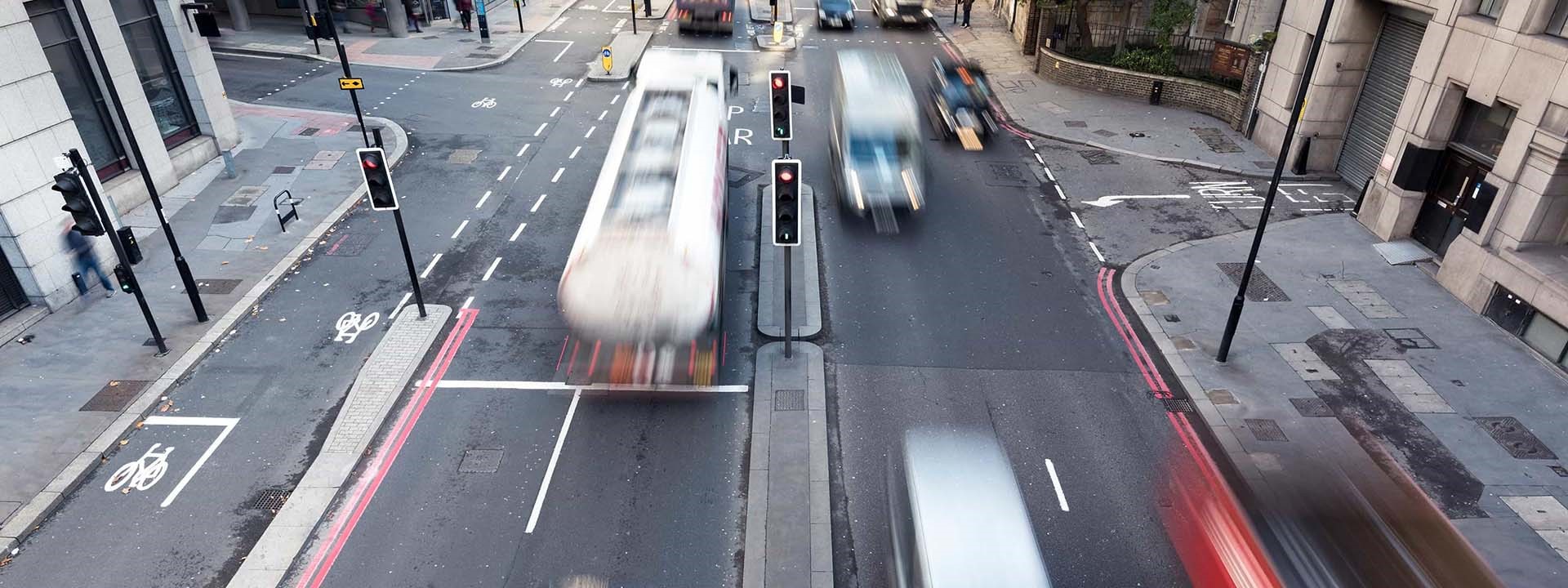Over 4,000 incidents involving vehicles carrying unsafe loads are reported every year in the UK.
The safe loading and movement of all load types around the UK is a significant issue. A falling load in a depot puts drivers and operatives helping with unloading at risk, and incidents on the highway put third-party road users at risk. The misconception that the weight of a load will keep it in place results in many incidents involving loads falling from trailers each year.
The UK is currently experiencing significant disruption to the supply chain, which is impacting, amongst others, deliveries to supermarkets and fast-food restaurants. A combination of post-Brexit rules around EU immigration, Covid-19 restrictions and self-isolation means there aren’t enough skilled drivers to meet demand, with the Road Haulage Association estimating that there is now a shortage of over 100,000 drivers in the UK. Increasing pressure to recruit more drivers and get deliveries moving may lead to increased road safety risks.
In the UK, over 4,000 incidents involving vehicles carrying unsafe loads are reported every year, whilst many other incidents regarding the loss of loads or part loads go unreported. These incidents often lead to prosecution for the driver and operator, but far worse than this, they can result in life changing injuries and in the worst case, death.
Offences
The Road Traffic Act 1991 introduced provisions into the Road Traffic Act 1988 making new offences, applicable to the state of loads on vehicles. These provisions reflect the seriousness with which the safety of loads on vehicles is now viewed.
The Road Traffic Act 1991 states that:
A person is guilty of using a vehicle in a dangerous condition if he/she uses, or causes or permits another to use, a motor vehicle or trailer on a road when the purpose for which it is used or the weight position or distribution of its load, or the manner in which it is secured is such that the use of the motor vehicle or trailer involves a danger of injury to any person.
The maximum penalty for this offence if committed in respect of a goods vehicle is a £5000 fine plus three penalty points and disqualification.
A person is to be regarded as driving dangerously if it would be obvious to a competent and careful driver that driving the vehicle in its current state would be dangerous. In determining the state of the vehicle for this purpose, regard may be had to anything attached to or carried on or in it and to the manner in which it is attached or carried.
The maximum penalty for dangerous driving is two years imprisonment. The maximum penalty for causing death by dangerous driving is 10 years imprisonment.
Standards
When a vehicle changes direction, such as when cornering, overtaking or going around a roundabout, friction or weight is not enough to stop unsecured cargo from moving.
Heavier loads are even more likely to move when the vehicle is in motion due to the load’s kinetic energy. Under heavy braking the weight acting in a forward direction can be equal to the weight acting down on the vehicle. Therefore, a load that is not restrained correctly will not be secure.
Because of this, we would strongly discourage securing any loads without incorporating the following minimum standards:
British Standards BS EN 12195, consisting of the following parts:
- Load restraining on road vehicles ― Safety, Part 1: Calculation of securing forces.
- Load restraint assemblies on road vehicles — Safety, Part 2: Web lashing made from man-made fibres.
- Load restraint assemblies on road vehicles — Safety, Part 3: Lashing chains.
- Load restraint assemblies on road vehicles — Safety, Part 4: Lashing steel wire ropes.
And Department of Transport - Safety of Loads on Vehicles Code of Practice (third edition).
Legal requirements and common sense require that all loads carried on vehicles are safe and secured, whatever the journey. This is to protect the people involved in loading, unloading, and driving the vehicle, together with other road users and pedestrians.
Prior to carrying any load on a vehicle, you must ensure that:
- Both loading and unloading should be subject to a risk assessment, as required by the Management of Health and Safety at Work Regulations 1999. Comprehensive advice on how to carry out risk assessments can be obtained from the Health and Safety Executive (HSE). Consideration should be taken not only for the load but the ongoing journey the vehicle must take until complete.
- Loading and unloading should be carried out by trained staff who are aware of the risks involved. Drivers should also be aware of the additional risk of the load, or part of the load, moving when the vehicle is being driven. This applies to all vehicles and to all types of load. The driver is ultimately responsible for the load carried on their vehicle, whether they were involved in the securing of the load.
- This Code of Practice is not restricted only to the load being carried by the vehicle; it also covers any equipment on the vehicle such as loader cranes, landing legs, tailgates etc. All of these must be stowed and secured to manufacturer instructions so not to be a danger to other road users and pedestrians.
- Consideration must be taken for the legal obligations on operators and others to ensure the safety of all persons involved in loading operations. These obligations expect safe systems of work for loading, moving, unloading, sheeting and safe access onto vehicles.
In view of the wide diversity of general loads it isn’t possible to suggest loading methods for every type of load likely to be encountered, however, two essential requirements must be satisfied when loading vehicles. These are that the load must be distributed so that:
- The maximum permitted gross vehicle weight and axle weights are not exceeded.
- The load's centre of gravity is kept as low as possible to achieve maximum stability when the vehicle brakes, accelerates or changes direction.
Remember…
DO check the weight of the load to be carried.
DO make sure that the vehicle is capable of carrying the size and type of load.
DO remember that the size, type and weight of the load will affect the handling of the vehicle.
DO check the load before moving off and whenever items are added or removed.
DO remember that loads can settle and shift during a journey causing lashings to slacken.
DO check the load at regular intervals and after heavy braking or sudden changes of direction.
DO make sure safe systems of work are devised and followed when loading and unloading vehicles.
DON’T overload the vehicle or the axles.
DON’T load the vehicle too high.
DON’T reduce the load on the steered axles by positioning the load too far back.
DON’T move the vehicle with any part of the load not restrained.
DON’T climb onto the vehicle or its load unless it’s essential and there is a safe means of access.
DON’T take any chances!
Risk management services for QBE customers
QBE helps businesses build resilience through risk management and insurance.
With almost a century of insuring commercial vehicles, 50 years’ experience in insuring bus and coach fleets, and 30 years as the UK leader in minibus insurance, QBE is fully committed to the motor sector and proactively helping customers to manage risk and drive down claims. This approach has made QBE a name to trust in commercial motor insurance.
QBE customers can access self-assessment questionnaires and a library of risk management material, along with a panel of approved partners who offer training, e-learning and other services at specially reduced rates. You can find more information in our Motor risk management service offerings brochure, and find out more about how QBE helps businesses to manage risk here.
Need to claim? Report it early
Finally, a reminder that if you have an incident and need to make an insurance claim, it’s important that you report it as soon as possible, ideally the same day. Reporting a claim early can save time and help you to receive any claim payments faster, as well as allowing us to help mitigate the cost of third-party claims.
Downloads
Your contact
Your contact

Kenneth Rutt
Motor Risk Manager

